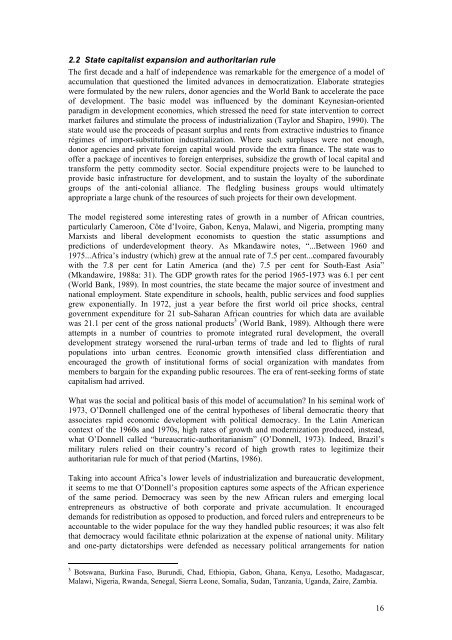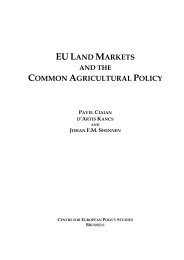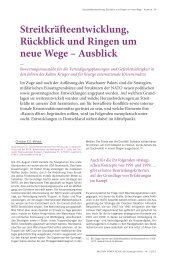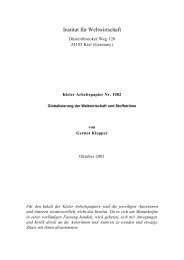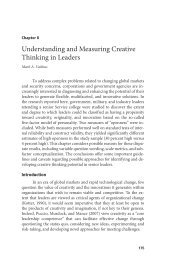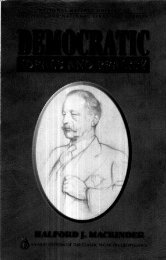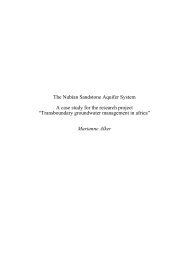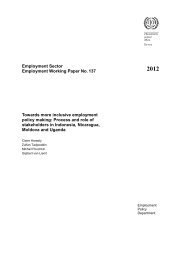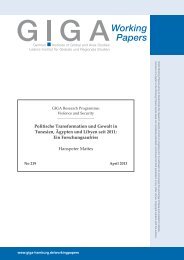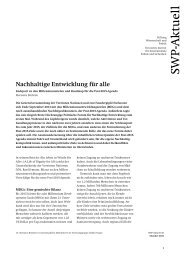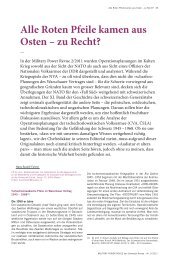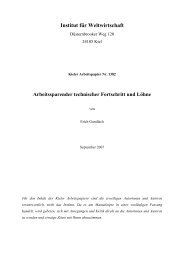Authoritarian Rule and Democracy in Africa: A Theoretical Discourse
Authoritarian Rule and Democracy in Africa: A Theoretical Discourse
Authoritarian Rule and Democracy in Africa: A Theoretical Discourse
Create successful ePaper yourself
Turn your PDF publications into a flip-book with our unique Google optimized e-Paper software.
2.2 State capitalist expansion <strong>and</strong> authoritarian ruleThe first decade <strong>and</strong> a half of <strong>in</strong>dependence was remarkable for the emergence of a model ofaccumulation that questioned the limited advances <strong>in</strong> democratization. Elaborate strategieswere formulated by the new rulers, donor agencies <strong>and</strong> the World Bank to accelerate the paceof development. The basic model was <strong>in</strong>fluenced by the dom<strong>in</strong>ant Keynesian-orientedparadigm <strong>in</strong> development economics, which stressed the need for state <strong>in</strong>tervention to correctmarket failures <strong>and</strong> stimulate the process of <strong>in</strong>dustrialization (Taylor <strong>and</strong> Shapiro, 1990). Thestate would use the proceeds of peasant surplus <strong>and</strong> rents from extractive <strong>in</strong>dustries to f<strong>in</strong>ancerégimes of import-substitution <strong>in</strong>dustrialization. Where such surpluses were not enough,donor agencies <strong>and</strong> private foreign capital would provide the extra f<strong>in</strong>ance. The state was tooffer a package of <strong>in</strong>centives to foreign enterprises, subsidize the growth of local capital <strong>and</strong>transform the petty commodity sector. Social expenditure projects were to be launched toprovide basic <strong>in</strong>frastructure for development, <strong>and</strong> to susta<strong>in</strong> the loyalty of the subord<strong>in</strong>ategroups of the anti-colonial alliance. The fledgl<strong>in</strong>g bus<strong>in</strong>ess groups would ultimatelyappropriate a large chunk of the resources of such projects for their own development.The model registered some <strong>in</strong>terest<strong>in</strong>g rates of growth <strong>in</strong> a number of <strong>Africa</strong>n countries,particularly Cameroon, Côte d’Ivoire, Gabon, Kenya, Malawi, <strong>and</strong> Nigeria, prompt<strong>in</strong>g manyMarxists <strong>and</strong> liberal development economists to question the static assumptions <strong>and</strong>predictions of underdevelopment theory. As Mk<strong>and</strong>awire notes, “...Between 1960 <strong>and</strong>1975...<strong>Africa</strong>’s <strong>in</strong>dustry (which) grew at the annual rate of 7.5 per cent...compared favourablywith the 7.8 per cent for Lat<strong>in</strong> America (<strong>and</strong> the) 7.5 per cent for South-East Asia”(Mk<strong>and</strong>awire, 1988a: 31). The GDP growth rates for the period 1965-1973 was 6.1 per cent(World Bank, 1989). In most countries, the state became the major source of <strong>in</strong>vestment <strong>and</strong>national employment. State expenditure <strong>in</strong> schools, health, public services <strong>and</strong> food suppliesgrew exponentially. In 1972, just a year before the first world oil price shocks, centralgovernment expenditure for 21 sub-Saharan <strong>Africa</strong>n countries for which data are availablewas 21.1 per cent of the gross national products 3 (World Bank, 1989). Although there wereattempts <strong>in</strong> a number of countries to promote <strong>in</strong>tegrated rural development, the overalldevelopment strategy worsened the rural-urban terms of trade <strong>and</strong> led to flights of ruralpopulations <strong>in</strong>to urban centres. Economic growth <strong>in</strong>tensified class differentiation <strong>and</strong>encouraged the growth of <strong>in</strong>stitutional forms of social organization with m<strong>and</strong>ates frommembers to barga<strong>in</strong> for the exp<strong>and</strong><strong>in</strong>g public resources. The era of rent-seek<strong>in</strong>g forms of statecapitalism had arrived.What was the social <strong>and</strong> political basis of this model of accumulation? In his sem<strong>in</strong>al work of1973, O’Donnell challenged one of the central hypotheses of liberal democratic theory thatassociates rapid economic development with political democracy. In the Lat<strong>in</strong> Americancontext of the 1960s <strong>and</strong> 1970s, high rates of growth <strong>and</strong> modernization produced, <strong>in</strong>stead,what O’Donnell called “bureaucratic-authoritarianism” (O’Donnell, 1973). Indeed, Brazil’smilitary rulers relied on their country’s record of high growth rates to legitimize theirauthoritarian rule for much of that period (Mart<strong>in</strong>s, 1986).Tak<strong>in</strong>g <strong>in</strong>to account <strong>Africa</strong>’s lower levels of <strong>in</strong>dustrialization <strong>and</strong> bureaucratic development,it seems to me that O’Donnell’s proposition captures some aspects of the <strong>Africa</strong>n experienceof the same period. <strong>Democracy</strong> was seen by the new <strong>Africa</strong>n rulers <strong>and</strong> emerg<strong>in</strong>g localentrepreneurs as obstructive of both corporate <strong>and</strong> private accumulation. It encourageddem<strong>and</strong>s for redistribution as opposed to production, <strong>and</strong> forced rulers <strong>and</strong> entrepreneurs to beaccountable to the wider populace for the way they h<strong>and</strong>led public resources; it was also feltthat democracy would facilitate ethnic polarization at the expense of national unity. Military<strong>and</strong> one-party dictatorships were defended as necessary political arrangements for nation3 Botswana, Burk<strong>in</strong>a Faso, Burundi, Chad, Ethiopia, Gabon, Ghana, Kenya, Lesotho, Madagascar,Malawi, Nigeria, Rw<strong>and</strong>a, Senegal, Sierra Leone, Somalia, Sudan, Tanzania, Ug<strong>and</strong>a, Zaire, Zambia.16


